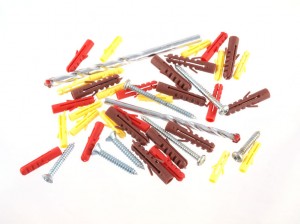 Many people tend to ignore the little bits of hardware used to hold things together, but they’re very much important to the integrity of the entire assembly. Fasteners play a huge role in keeping different items functional, so it’s important to choose good quality ones of the right kind.
Many people tend to ignore the little bits of hardware used to hold things together, but they’re very much important to the integrity of the entire assembly. Fasteners play a huge role in keeping different items functional, so it’s important to choose good quality ones of the right kind.
Fasteners come in metal, plastic, or a combination of both, but plastic fasteners are preferable in many instances. They are used in a wide range of applications, but they are especially ideal for power supply components and units since they make assembly easier and faster. Plastic fasteners are as durable as their metal counterparts and they are definitely more flexible and affordable.
Some of the most common fasteners used are rivets. You can see these items in a variety of applications from tanks and bridges to energy supply equipment. As power components, these rivets popularly come in the following types:
- Snap – This is designed for a quick, easy, and tool-free installation. It only needs pressure from your fingertip to be applied. Simply place it in the hole and then press down on the head. The legs will expand to secure the components in place. To remove it, just pull up on the head. You can go for the regular kind of snap rivets or the heat-resistant variety. It has a round head that provides a clean and finished look.
- Countersunk – This one comes with a flat, chambered head that is easier to pull up than the snap rivet’s round head. This type of head also makes dis-assembly quicker. Installation is also fast, easy, and tool-free. It requires the same simple installation process of placing in the hole and then pressing down on the head.
- Releasable type – This comes with a prominent, large finger grip, knob-shaped head, which makes installation and dis-assembly even faster and easier. Same with the previous two types, you only need to press down on the head to install and pull up to remove. This type of rivet can be used multiple times.
- Drive fastener – This comes with a hollow body, making it more flexible for easier installation. It is used on a wide range of materials, from wood and metal to plastic and rubber.
There’s obviously more to fasteners than meets the eye. With the variety available, it’s important to figure out which one is best for your purpose. Hopefully, the above descriptions will assist you in selecting the right type to use.
